In which Wack rants completely incoherently about why the fixed definition of art as an aesthetically pleasing end-product relies on a dated and time-worn consensus that doesn’t necessarily hold up today. Before you read: Note that this is not a rebuttal to the fact that one’s subjective perception can change how one personally values a piece. But moreso an address to the people who put the phrase “ Art is subjective “ in their mouth to assert their subjective perception, as objective, culture-spanning truth about what makes an “art piece”.
If you’ve discussed art with people a number of times. You might have had a conversation or two about what makes art - art. Either in regards to a piece where you and your mate cannot find consensus in liking or disliking a piece or just as a deeper philosophical conversation.
“ That ain’t art!” is a pretty common phrase to hear when people, usually otherwise not involved with the art-world gets into a debate about the validity of a piece.
There’s nothing wrong with having a negative opinion about an art piece, but the act of judging a piece of work’s validity as art solely by the aesthetic value, or immediate reaction, has been and is still used to make some types of creative expression more prestigeful and culturally relevant than others.
There is a reason that the phrase has begun taking on a more derisive meaning between artists. Who will throw it around to actively short-hand criticize a piece which they do not personally like. And that is because the statement, whether in its original phrasing or in any other veiling shows a disregard for the piece beyond the viewer’s personal liking.
What constitutes art: literal definition
Oxford Dictionaries
( https://www.lexico.com/en/definition/art )
Defines that art is the expression or application of human creative skill and imagination. This is typically in the form of visuals, such as paintings, sculptures or fine arts.
This ^ Is one the most agreed upon takes on the modern perception of what art is. And though the definition of art continuously changes and disputes, this seems to be the current consensus across multiple partners, and an understanding which has objectively survived through the eras.
Some ways history has shaped the definition
Why is Europe considered the common artistic hot seat through history?
As a European who won’t bother you with the long-winded history of colonialism: Europe was a bunch of conniving twats through a good bit of recorded history, who spread themselves thin across the globe and imposed their norms onto other civilisations, stealing their art history in the process and upholding that as “ exotic pieces of fringe art”, never fully incorporating those into their own art culture as much more than curiosities OR veil the presence of the foreign culture so much that its native art was simply assimilated into our art history without much credit - and therefore managed to superimpose their own preferences onto the broader perception of art.

https://earthnworld.com/cave-paintings/
The definition of art has changed drastically over the course of human evolution ( and even in recent history ). Undoubtedly, our ancestors weren’t out to provoke some greater political movement when he or she scrippled their stickmen and oxes on the cave-walls. They were telling stories, passing knowledge, communicating and conveying experience down to those who where with them, or came after them. It’s unlikely that they even considered art something of higher cultural standing, and moreso just a means to develop their kind, maybe even entertainment.
Cave-paintings was perhaps a cognitive learning tool:
https://www.sciencedaily.com/releases/2018/02/180221122923.htm
Religion in Europe
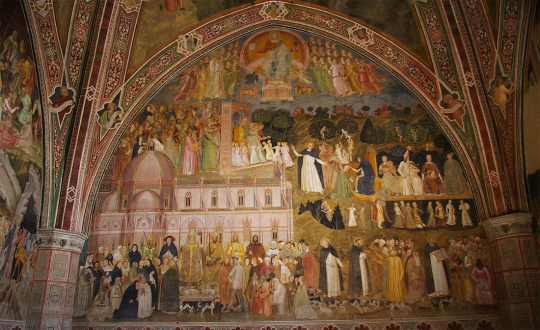
As cultures developed and societies grew, we saw that art became a tool for religion, once again to tell stories - this time from the scriptures, breaking the barrier between the literate priests and preachers, to the illiterate common folk. Making the spread of their religion quicker through increased accessibility. During this time, being able to capture a narrative as cohesively as possible using the limited resources you probably had access to became what could probably have been considered a definitive talent of “artistry”. This tendency held a firm grip on the art world for eras to come. The church was one of the few instances in public that had the resources to hire artists for their projects, and thusly - ( along with the international spread of the religion ) became the most prevalent facet of art history at the time. This monopoly, however, came under threat once the printing press was invented in Strasbourg, Germany during the 14th century once the newfound widespread literacy began the era of reformation.
The printing press
https://en.wikipedia.org/wiki/Printing_press
The standard of Artistry followed the money
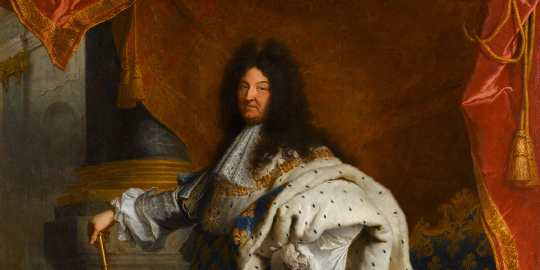
https://www.europeana.eu/portal/en/exhibitions/baroque-and-enlightenment/portraits-of-power#ve-anchor-intro_2070-js
As our societies kept growing richer and more complacent in a classist system, noblemen and women would pay handsomely for art pieces as a luxury. As portraits became a symbol of societal importance and wealth. Now, capturing the reality as closely as possible, as to give a truthful depiction of your subject became the standard for painters and sculptors, and possibly what could be considered artistry within the institution at the time.
The church was still a major patron of the arts, but it was now common that local nobleman and royalty splurged on these very realistic looking paintings, in order to flaunt their riches to the masses.
It was all the way until the 18th century before we’d seen any significant epokés concern itself with the subjects of the growing middle class. ( Bidermeier, Vienna )
The normalization of abstract art
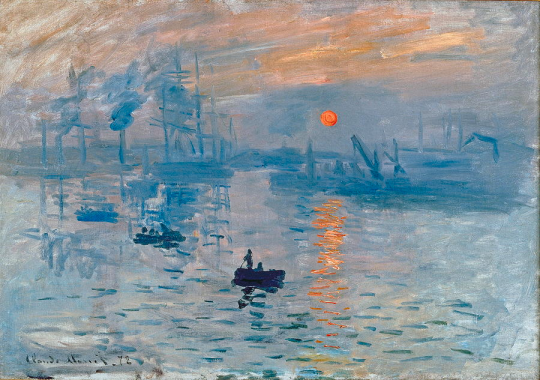
https://pixels.com/featured/8-impression-sunrise-claude-monet.html
It wasn’t until the onset of the 19th century where a considerable amount of abstraction began to slink its way into the public eye, through the genre of Impressionism. ( Of which the french conventional art community was pretty salty with, as impressionist painters were elegantly dodging the normal expectations for how an art piece should look ). The impressionist era revved up in the wake of Claude Monet’s painting “impression”, from which the term was coined. This genre was a lot more subjective to the atmosphere that the painter was feeling when painting the piece, and pretty much instilled the concept of deriving value from an art piece through the feelings it could instil in the viewer.
This also brought the subject of these pieces down to the trappings of domestic and social life. Something that the Bidermeier movement had also started back in Vienna a century before. Despite the major pushback it got at the time of its conception, Impressionism still moved onto push the bar for what was acceptable with artistry.
The subversion of expectations takes hold
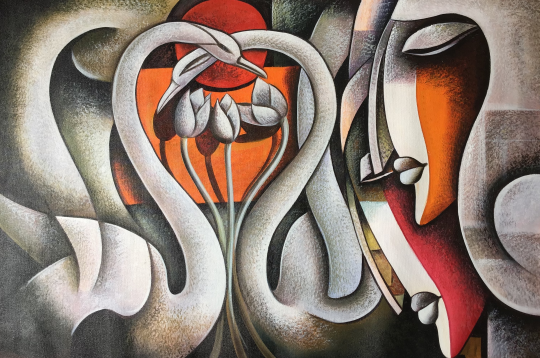
http://kuldeepfineart.in/?product=morden-art-painting
After Impressionism found a foothold in Europe, many more movements would pick up the mantle of decimating the previous understanding of art as a medium focused on aesthetic polish. A century after Impressionism had made its first bounds, Expressionism shot up in Europe featuring iconic works like “ the Scream” by Edvard Munch in 1893.
Later, we saw a cascade of countermovements such as Cubism and Dada, and even later - contemporary movements that we know of today like Pop art
( 1950s ), Psychedelic art ( 1960s ) and most recently Unilaianism ( 2019 )
Each of them facing their own share of pushback from the conventional art scene, while pushing the envelope for what was considered “artistic” and what wasn’t.
This is why the consensus of artistic method between artists across genres and formats still stands as a viable validator for whether or not something can constitute as art. If we look at it at its deepest banality, the mere application of creative skill and innovative problem-solving constitutes as “artistry”, and that any product thereof by that extension is to be considered “art”.
As history has proven, our understanding and validation of artistry has been changed over the course of innumerable epokés and period to fit with the preference of the contemporary norm. But one thing that had always stayed true is the method of creative application with which the artist has conceived their piece.
And whether or not you agree with the statement, would very likely hinge onto whether or not you desire art to fit within a certain formula ( be it a vague one or not ).
The public problem with Modern and Scandal art
So from what we deducted in the first chunk of this behemoth of an essay: What people actually mean when they say “That isn’t art” is
“ I don’t like this particular piece, and I don’t understand/care about the context it is presented in”
Now, just disliking something for the sake of it not fitting with your preference is not problematic at all. You can dislike something just for the hell of it, and your opinion would still be valid.
Where the problem crops up is when we assert that our dislike invalidates whether or not something is art - rather than whether or not it is in fact -good- art.
The horse-sacrifice
Modern art especially is versed in this kind of criticism. As many people don’t see the appeal of artistry that utilizes the draftsmanship itself less, and the reaction/ post-production history of the piece more.
My favourite modern piece is by a Danish artist: Bjørn Nørgaard, who slaughtered a horse ( the ageing horse was properly euthanized by a vet prior to the process, which - let’s be honest, is probably more humane than what the factories do ), and sectioned it up into 199 jars, where it was preserved. ( Do not look up this particular piece if you’re squeamish ).
This piece was what has been more commonly coined as a “Scandal-piece”, a piece of art meant to inspire outrage. Bjørn’s horse was a protest towards the Vietnam War. It’s intent to rile up the people over something so mundane as a horse while turning a blind eye to the brutality going on outside our own borders. It worked, perhaps a little more effectively than the artist had expected, as he could not return home to his own house up to three months after the happening.
The controversy that followed had a lot of people rolling their eyes about whether or not this act could be considered artful. Undeniably, it was creative even beyond its own controversy, and it got the reaction that it had set out to get - even if it overshot its mark. But still, people refused to regard it for what it was, and instead declared it the doings of a madman.
Now - the horse is on display on ARoS in Aarhus and the national museum of Art in Copenhagen. It is heralded as one of the most controversial, yet effective pieces of modern art in danish history, despite many people rolling their eyes.
What Bjørn’s horse told us was that even if we don’t understand an art-piece on our first or even second experience, it doesn’t take away from it serving its purpose. But still - people will blatantly disregard the definition of art if they don’t like the piece personally.
When we validate an art piece for ourselves, we tend to base it on whether or not it resonates with ourselves first. And next how it might resonate with a broader demographic. There’s nothing wrong with this.
The problem comes when we try to assert our own internal opinions on the value of the piece as a whole. There’s always going to be someone who dislikes a piece, and someone who likes it. Even better, these numbers can fluctuate if the piece is moved through different contexts. If you stick a shovel on a drywall and presents it to someone who doesn’t really care about Modern art, they might not really give a damn about that shovel either. If you shove it at a group of wine-swirling connoisseurs of modern art, they’d probably be much more inclined to like the piece.
If we assert that the validity of art is truly subjective, then we’d have to pick one of the two groups to be of the “right opinion”. And by that extension invalidate the other group’s. Both groups consume art in one way or the other, but somehow one group would for one reason or the other happen to have more legitimate experiences of art.
This could lead to a lot of people to say that “ well. Art is subjective”, which in its writing indicates that the individual- based on its liking or dislike to the piece, will validate or invalidate the pieces’ status as “art”.
Which leads me to the next bit:
Quality in art can be subjective
Now what most people who throw the phrase about might actually mean with this statement is that an individuals perception of an art piece’s quality is subjective.
And that it is!
If you don’t care much for draftsmanship, then a painting won’t appeal to you. If scandal art irritates you because the artist hasn’t constructed the subject of the piece itself - then you probably won’t regard it as a “good” art piece either.
( I personally don’t really care for Expressionism or by that extend Impressionism, personally much more of a classic and renaissance type)
It all comes down to appeal. Can you resonate with a piece? And if you can, you’ll probably say that the piece is good, or at least has a host of redeeming qualities. ( unless you’re liking it ironically, which is fine too )
People who are trained in art, or generally dabble more in artistry will likely have a broader regard for what they consider to be quality outside of their own preferences. While someone who isn’t might stick with their preferences. Either of their experiences is legitimate.
Your experience with a piece is your own. No question about it.
Rebuttal: The extent of the global art community and why a non-vague classification is difficult
Another reason why a classification fixed in subjectivity can become troublesome, is when we consider the mass accessibility artistry has seen with the invention of mass media. Now, anyone and everyone can upload their pieces to the internet, and garner reactions from people with widely set opinions.
All artists have the option to work out of the vacuum of their own desk, and once again we’re seeing them push the limitations to what constitutes artistry. But at the same time - they ‘re exposed to exponentially more people and opinions, who all have a subjective ideals to what art should be.
That is why the consensus of method lends itself better to artistry’s ever-expanding scene.
Rebuttal: Do we uphold all creativity to the same standards as exhibit-pieces?
Just a quick one: If a child brings you a piece of art, do you consider it art? Probably not in the same sense that you’d consider Picasso’s or Van Gogh’s works - art.
It is worth acknowledging that anyone has the capacity, and once in a while - will produce art, whether by intention or as a by-product of a process. The consensus that Art is in the creative thinking propagates that this is true. Does it make the child an artist? Maybe not.
Artists are generally classified as individuals who intentionally produce art on a “regular” basis. But that’s a topic for a whole other discussion.
My point is that, just like I’ve previously argued, there is no real “bar” to climb with the more vague classification of what constitutes art. We live in a world where everything can potentially be viewed by billions of people, so inevitably, someone will garner an audience way beyond what we personally think they deserve. But regardless they leave their mark on the art world anyway. And fame and recognition can be random as fireworks. The culture of today leans heavily on liking ( alongside genuinely appreciating ) things with irony or in rebellion to something else. It’s how the impressionism came to define an era. It is what counter-culture is in part.
Invalidating these pieces would mean excluding huge influencers in our community, and potentially missing out on what they can do for us.
So once more just to sum up:
“Art is subjective” as an argument to whether or not you like a piece can be just fine if by that you mean that your opinion and your companion’s hold equal weight in regards to the perceived quality of a piece.
“That isn’t art” as a means to subvert whether or not a piece can be classified as “art” by whether or not it pursues the value of artistic virtue (The appreciation for fixed methods, aesthetic or ideas in art ) poses a host of questions and issues that can be understood to disregard the evolution of art and how the environment is constantly developing.
All of this supports and lends itself to why we are currently at a stage where we would rather define artistry as an application of the artistic method, rather than the end product.
It’s all in the idea rather than the conception.
from The Redline Station https://ift.tt/2LZqGQ8
via IFTTT
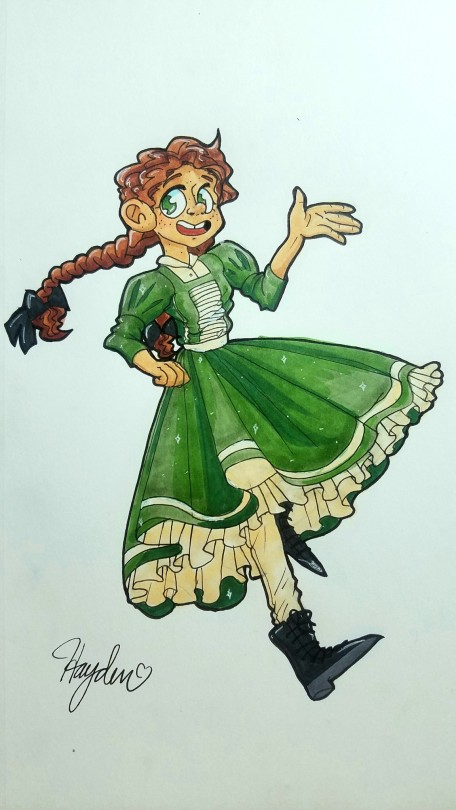
No comments:
Post a Comment